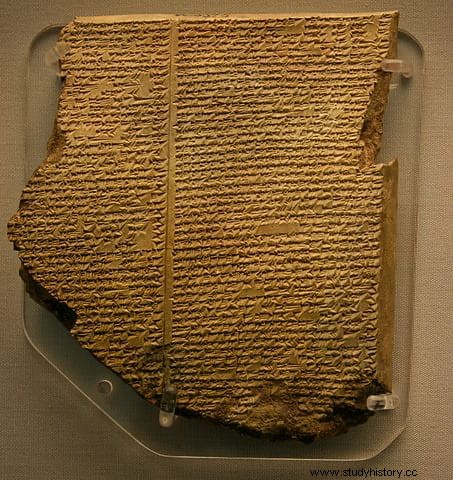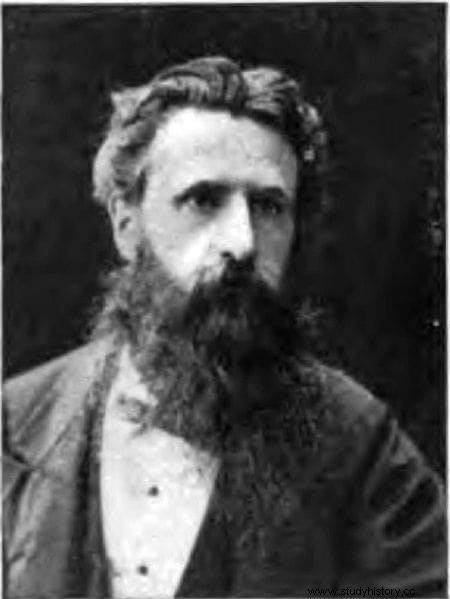During the 19th century, the eyes of almost all European archaeologists were on Mesopotamia, where expeditions a century ago had already identified places mentioned in the Bible.
However, everything, or almost everything, was yet to be explored and investigated. The main problem they faced was financing, so they used a little trick to present the excavations to European society as a necessity of public interest , which was to be financed with state and private funds. This interest it resided mainly in the fact that what they were going to look for was, neither more nor less, than the documentary and archaeological confirmation of the stories narrated in the Bible. Of course, the trick worked.

One of these archaeologists was Sir Austen Henry Layard, who, before devoting himself to investigating ruins, had traveled throughout much of the Middle and Far East, and developed a prolific diplomatic career, mainly at the British Embassy in Constantinople (at that time in 1842 not yet known). it was called Istanbul).
Encouraged precisely by the ambassador, Layard left Constantinople for Mesopotamia in 1845, determined to devote himself to his true passion, archaeology. His target is the ruins of Kalkhu (better known as Nimrud), the ancient Assyrian capital located about 30 kilometers southeast of Mosul (sadly destroyed by the Islamic State last year 2015).
For six years he worked uncovering palaces, buildings, and numerous sculptures and reliefs, including the black obelisk of Shalmaneser III, most of which ended up in the British Museum.

Under pressure to find the cities mentioned in the biblical texts, Layard believed that he had found the ancient city of Nineveh and published a book about his discoveries titled Nineveh and its Remains (Nineveh and its remains ), which soon became a success in England and favored the sending of new expeditions.
In 1846 Layard began to excavate a new site in parallel, which would ultimately turn out to be the real city of Nineveh, although he did not yet know it. Among the discoveries he made there was the library of the Assyrian king Ashurbanipal (668-627 BC), with 22,000 clay tablets inscribed with cuneiform script.
Years later the tablets, along with others discovered, were translated by George Smith. Among them was the so-called tablet number 11 of the Gilgamesh poem , and according to a witness present at the time he began to read it and realized what it contained, Smith said I am the first man to read these characters after two thousand years of oblivion , and immediately began to jump and run around the room in a state of great excitement and, to the astonishment of those present, he began to undress .

On December 3, 1872, he read his translation, this time clothed, before members of the Society of Biblical Archeology in London. This tablet tells the Chaldean story of the Universal Deluge , which made the biblical text about Noah an adaptation of that and not an original work. Assyriology was born.
Another of those tablets would come to take away the Song of Songs , included in the Old Testament and dated around the 6th-3rd centuries BC, the oldest love poem title in the world. But for that we would have to wait until 1951.
That year the American Assyriologist Samuel Noah Kramer was in the Istanbul Museum looking for new stories to translate from the cuneiform tablets for his famous work History begins in Sumer (1956). As he relates in the book, at one point one of the exposed tablets, number 2461, caught his attention due to its good state of preservation. When he examined it he realized that it was a poem divided into stanzas.
It was the Shu-Sin Love Song , which experts now date to around 2000 BC, and which is part of the annual ritual of the sacred marriage, by which the king of Ur was symbolically married to the goddess Inanna through one of her priestesses. The ritual was held every New Year's Day, and the poem was recited by the bride along with music and dance. This particular poem was dedicated to King Shu-Sin, who reigned in Ur between 1972-1964 BC. according to some authors, or between 2037-2029 B.C. according to others.

The first two stanzas of the poem, translated into Spanish from Kramer's original translation, would be more or less like this (Jaime Elías's version):
These discoveries forever changed the conception of history, taking it back many centuries before the biblical text. Now a whole world was opening up that delved into the past, much further, and opened the doors to modern historiography.
